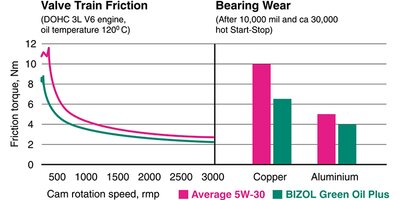GEAR OIL REQUIREMENTS – BIZOL ALLROUND GEAR OIL
Which requirements for gear oil?
Excellent lubricating properties with BIZOL
Transmissions are among the most important components in a vehicle: they transmit the torque of the engine to the wheels. For this reason, they are exposed to high loads and wear. Maintenance of the transmission oil therefore plays an important role. Not only the regular replacement, but also the selection of the right transmission oil and gear oil requirements should be considered during the service intervals. Quality criteria such as a protective lubricating film that can withstand high pressure loads, compensation of large temperature differences and, of course, excellent lubricating properties should be met.
When is it necessary to change the gear oil?
Problems due to inferior oil quality often become noticeable like jerky or heavy shifting processes in cold manual transmissions or delayed shifting behaviour in automatic transmissions. The reason for this can be premature consumption and signs of ageing of the transmission oil. Influencing factors such as the entry of condensation water can additionally stress the transmission oil. The formation of condensation must be absorbed by a functioning transmission oil, otherwise the corrosion protection is no longer guaranteed. Damage due to deposits and contamination is then only a matter of time.
What are the advantages of buying BIZOL Gear Oil?
With its Allround Total Drive Line (TDL) 75W-90, BIZOL offers a fully synthetic transmission oil for manual and hypoid axle transmissions with the specification GL4/GL5. It covers a wide range of transmission models for passenger cars and commercial vehicles and thus contributes to the reduction of the number of types in the workshop. The danger of misapplication due to mix-ups is thus limited. It offers optimum lubricating properties, high wear protection and can be used for long service intervals. Strong EP additives ensure a stable lubricating film even under heavy pressure loads. The smooth running properties of this transmission oil have a positive effect on fuel consumption. Synchronized and non-synchronized manual transmissions as well as hypoid axle transmissions benefit from these properties.

You might also like

Prof. Dr. Boris Zhmud, Head of R&D, BIZOL Germany

Within the realm of automotive care, few substances are as vital as motor oil, in ensuring the seamless operation of a vehicle's propelling device. It serves as the lifeblood of a motor, ensuring that the intricate machinery operates efficiently and without unnecessary friction. The functions of motor lubricant substance extend far beyond just lubrication, encompassing a range of critical tasks that contribute to the longevity and performance of a propelling mechanism. In this article, we’ll delve into the multifaceted functions of motor oil and explore how it plays a pivotal role in maintaining the health of automotive powerhouses.

The modern marvel of an internal combustion motor powers our vehicles, providing the strength and reliability we rely on for daily transportation. However, just like anything else subjected to constant use, motorized units experience wear and tear over time. Component deterioration can significantly impact performance and longevity. In this article, we will delve into the intricacies of engine wear meaning, explore the various causes behind it, provide actionable tips to reduce and prevent it. Furthermore, we will look at how specialized engine oils, such as BIZOL, play a crucial role in safeguarding your engine’s health. Let’s begin by understanding what engine wear is and the factors that contribute to it.

